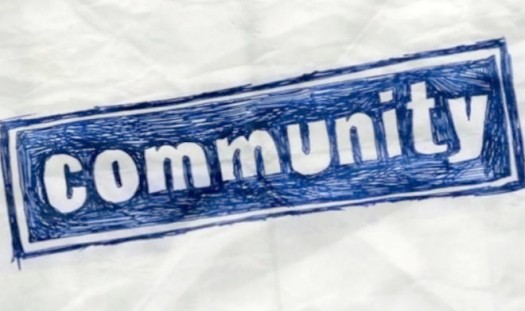A Placemaking Journal
Achieving Community: Let’s get real
Not so long ago, Kristen Jeffers (who blogs as the Black Urbanist) shared an article over at Afropunk called “The Caucasian’s Guide to Black Neighborhoods.” It’s very, very funny, and particularly useful reading for anyone who’s more interested in our ability to build meaningful communities than in the more prevalent discussion of who, in any particular place, does or does not belong.
In short, says author Michael Harriot, mutual respect, communication, and a willingness to roll with neighborhood norms (okay, his take on this last point is articulated a bit differently) is what makes the difference. These are the building blocks of comfortable co-existence, from which acceptance, belonging, contributing, and building something together, it would seem, become more viable propositions.
At the time, I remember being struck by just how much of Harriot’s tongue-in-cheek description of an everyday black neighborhood embodied all the things that urbanists and community activists seem to be chasing. We may use different and decidedly more wonky language but the net outcomes are basically the same.
Neighborhoods, in their truest sense, are characterized by strong ties and conviviality, interdependence, eclectic mixed-use, and a collective sense of self-reliance — all of which is engendered, embodied, and enforced on a day-to-day basis by particular individuals playing key organizational roles.
The sense that people of perhaps wildly different cultural perspectives might share common ground when considering what community, at its best, actually looks like is a hopeful one. But can it really play out in practice?

A key difference
I’ve written before about the real problem, as I see it. That is, the way communities form and the manners by which they care for and protect one another evolved organically across thousands of years of human history in which one thing was consistently true: We needed each other. And we knew it.
Now, for the past century or so, a host of advancements in standard of living, energy extraction, technology, health care, comfort, etc. has given many — particularly the affluent — a false sense that this is no longer the case. We don’t need each other. We’re self-made, rugged individualists and if we need something it’s surely something that can be purchased. We’ll just make a call.
As this belief has become more prevalent, it’s become manifest in our behaviors which have then become manifest in our laws — separating ourselves and outlawing the casual networks of commerce and care that build community resilience. But as it turns out, this rise of the individual has also revealed, somewhat ironically, a dark underside to our collective delusion: We might replace the care and protection of community with more personal autonomy and a curated network of services-for-purchase but we can’t replace its far more valuable by-product: the sense of transcendent human fulfillment that’s only possible in communion with other human beings.
Perhaps it’s a stretch, but I’ll throw it out there anyways: Would our 2016 Presidential election season have played out the same way if we’d been, collectively, a more empathetic and interdependent national community? One that didn’t reflexively view others solely in terms of what they have to take rather than what they have to give?
What to do?
So what’s the prescription in a world where people are literally more disconnected and, for many, innocently or unknowingly participating in daily behaviors built on the false promises of isolation and consumptive self-determination?
For many, their day-to-day existence in the modern world actively works against the formation of the very social and commercial ties that characterize a truly meaningful sense of what we call community.
The person who serves as neighborhood role model and keeper-of-order? We have the police for that. The neighbors who provide services or sell food out of their homes? That’s outlawed. The kids who need opportunity and guidance? That’s their parent’s responsibility.
These are hard habits to break. But we know we need to because many, many people are carrying an emptiness they can’t explain. They yearn for community but find it difficult to experience in ways that aren’t superficial or, worse, characterized only by a collective effort to keep others out.
Technology to the rescue?
Technology, particularly social media, has certainly been on the case, and the prospects for all those connections it’s helped make is something I’ve written about before. Since that time, we’ve had the rise of the sharing economy and the results there are also a mixed bag. Services like Uber might not have all that much to do with genuine sharing but they have proven to be better mousetraps — providing consumers experiencing terrible or nonexistent taxi service a viable alternative. Ditto with Airbnb. It provides a valuable service and is even fostering connections to some degree, but it’s not typically in ways that build strong, resilient neighborhoods.
But now there’s something (somewhat) new on the horizon that may just have what it takes to crack that nut: Fostering neighborhood-based commerce in a way that brings people together and builds meaningful local ties.
It’s called Josephine and it’s an app for connecting hungry people with local cooks preparing small run, take-away dishes out of their homes. In short, cooks sign up with the service, undergo training and kitchen inspection, and then post what they’ll be cooking, when it’ll be available for pick-up, and what it costs. Neighbors using the service drop by during the appointed window, hang out in the kitchen, chat while the meal is packaged up, and head home, feeling one step closer to an actual neighbor and to the value that neighbor presents to the community.
The cooks, on the other hand, develop authentic interdependent relationships with their neighbor customers and even with other cooks in the area.
What’s the rub?
Of course, as I mentioned previously, we’ve outlawed these types of activities — just as Uber and Airbnb have discovered in their ongoing conflicts with local regulators. In fact, Josephine may face a tougher road than most, as their goals not only conflict with typical zoning regulations that outlaw home-based businesses, but also with health and safety regulations that govern food production.
My hope is that, like Uber and Airbnb, communities will find the middle ground that works for them rather than trying to force new forms of innovation into established, either/or systems of doing things.
Surely there are levels of production below which the use of an inspected home kitchen might be acceptable, and surely the traffic generated by a handful of customers each day is of no real consequence. But existing regulations (and, in many cases, attitudes) say otherwise.
You can read more about how Josephine is taking on these challenges here, here and here.
In closing
Looking at the types of neighborhoods described by the Michael Harriot piece — places where many if not most people lack the option of just buying their way out of their problems — should tell us something.
When we need each other we naturally organize ourselves in particular ways. Those ways work, from a purely functional standpoint. But they also work on a deeper level. By bringing us closer and enabling the give-and-take of daily human negotiation, they also make us something more. Something better.
There’s the idea of community as it’s often presented in marketing literature and then there’s this. When people say they yearn for community, whether they realize it or not, this is what they’re pining for.
–Scott Doyon
If PlaceShakers is our soapbox, our Facebook page is where we step down, grab a drink and enjoy a little conversation. Looking for a heads-up on the latest community-building news and perspective from around the web? Click through and “Like” us and we’ll keep you in the loop.









